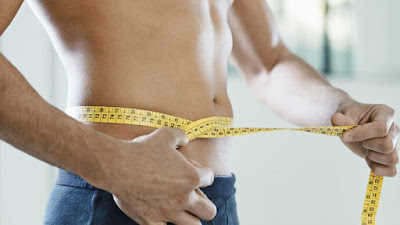The Flat Belly Diet promotes weight loss of up to 15 pounds within 32 days revealing a flat belly, with zero sit-ups required, using a Mediterranean-style diet focused on unrefined, whole foods. The key ingredient of the Flat Belly Diet is the inclusion of monounsaturated fats, or MUFAs, with each meal, which purportedly targets fat around the belly.
The BasicsThe diet's creators claim that, by limiting the caloric intake to roughly 1,600 calories a day, split between four meals spaced four hours apart and the inclusion of a MUFA at every meal, belly fat will melt away. Each meal is limited to 400 calories maximum, but the macronutrient breakdown does not have to conform to a strict ratio and can fluctuate with each meal. The allowed foods are fruits, vegetables, whole grains, nuts, beans, lean protein and red meat is allowed once a month. The Flat Belly Diet was developed by Liz Vaccariello and Cynthia Sass, editor-in-chief and nutrition director, respectively, of Prevention Magazine. Prevention Magazine is a healthy lifestyle magazine covering health, nutrition, style and cooking. According to the authors of the plan, research has shown that monounsaturated fats directly target the fat around your midsection as well as control your satiety, making it easier to stick to the plan without being left with a feeling of hunger.
MUFAsThere are five different categories of MUFAs: oils, nuts and seeds, avocado, olives and chocolate. Oils include canola oil, flaxseed, peanut, sesame and soybean and can be used to cook with, as a dressing, marinade or even pasta sauce. Nuts and seeds include almonds, natural peanut butter, dry-roasted cashews, pumpkin seeds, sesame seeds and sunflowers seeds. These nuts and seeds are perfect for a snack. Avocados can be sliced and served with any meal or added to salsa. Olives are also perfect for snacking but can top salads and pastas. Chocolate can be dark or semisweet chocolate and is the perfect way to treat yourself at the end of the day. The MUFAs per meal are limited to one serving size, according to their respective nutrition labels.
Sample Meal PlanThe following is a daily sample of the Flat Belly Diet menu plan with approved recipes provided by the authors of the plan:
Breakfast Vanilla Fruit-and-Nut Parfait Mix 1 1/2 c whole grain puffed cereal with 6 oz fat-free vanilla yogurt, 1 c blueberries, and 2 Tbsp almonds.
Lunch Mediterranean Sandwich Spread 2 slices sesame-sprouted whole wheat bread with 2 tbsp black olive tapenade; fill with 2 oz deli turkey, 1/4 cup sliced red onion, 1/2 sliced fresh plum tomato, and 3 large romaine lettuce leaves. Serve with 1/2 cup sliced banana
Dinner Salmon Steak Amandine Serve 4 oz grilled wild Alaskan salmon with 1 1/2 cup steamed green beans dressed with freshly ground black pepper and 2 tbsp. sliced almonds.
Snack Chocolate-Strawberry Smoothie Blend 1/2 c fat-free or soy milk, 6 oz fat-free vanilla yogurt, and 1 cup frozen strawberries for 1 minute. Transfer to glass, stir in 1/4 cup semisweet chocolate chips, and eat with a spoon.
The Flat Belly Diet allows you to be flexible with the foods you eat on a daily basis so that you don’t become burnt out on eating the same bland foods day-in and day-out. They is to maintain the 400 calorie limit per meal and include one MUFA.
WarningsAccording to an ABC News report profiling the actual effectiveness of trendy diets, the Flat Belly Diet is overall a fairly healthy diet plan and the strict limit on calories will certainly prevent weight loss. As far as the weight coming strictly off the midsection due to the inclusion of monounsaturated fats, ABC News reports that there is nothing in scientific literature that substantiates these claims, but initial weight loss in general tends to start at the midsection.
As always, before you start a new diet and exercise routine, it is important to consult with your physician to ensure your body this change. Fad diets such as this tend to take a toll on the body, especially within the first couple of weeks.























